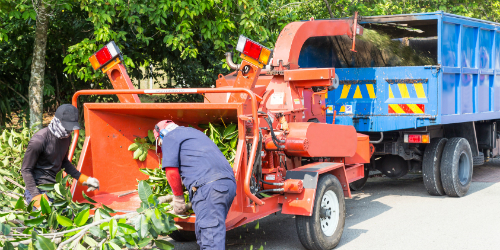Tree Trimming Safety

We enjoy our natural surroundings and especially plants and trees; however, there are times when our plants become a hazard and must be trimmed to bring them back into control. Trees can grow and impinge on other structures or systems. One of the most common obstructions is to above-ground electrical wiring. When this is the case, branches must be trimmed and the tree thinned to provide room for the wiring. Inattention can result in damage to the wires and an electrical hazard. Another obstruction may be wildlife. Trees are habitats for a variety of animals and insects. Every tree trimming operation should include an evaluation of the effects on any tree residents as well as any dangers to the workers, for example, bees, wasps, ants, etc.
There are several methods for safe trimming of trees. The task must be evaluated by a skilled, competent person to determine the best way of maintaining safety of the workers and other affected persons. Tree trimming can be done from the ground or from a height. The most commonly used method for trimming trees from a height is in an aerial lift. When using this method, not only is it important to manage the tree branches and any exposures to wiring or other obstacles, but also to follow fall protection regulations and best practices for working from an aerial device.
Low hanging tree branches can also be trimmed from the ground. In all cases, proper equipment must be used and all employees must wear Personal Protective Equipment which will usually consist of a hard hat, safety glasses or a face shield and gloves.
Any tree trimming operation must also provide for the safety of others not employed on the operation. This would involve providing barricades, signs, or alternative routes around the work area.
To get more information on the applicability of this program for a specific County operation please contact the corresponding departmental Safety Coordinator.
For further information on specific regulatory guidelines please refer to the link(s) below:
Tree Work, Maintenance and Removal (Cal-OSHA General Industry)
Tree Work Safety Fact Sheet (Cal-OSHA)
 Translate
Translate